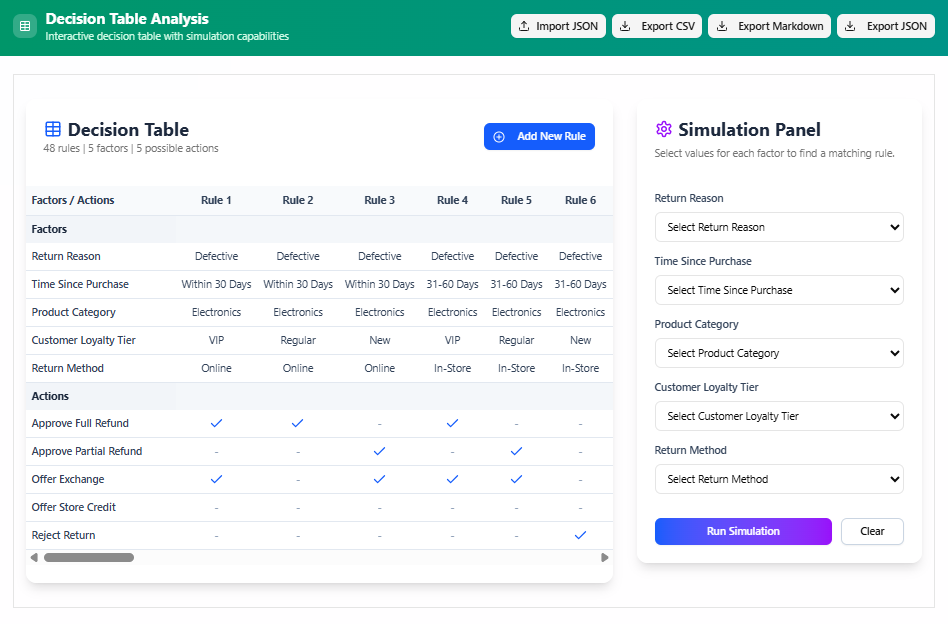Now Reading: What Exactly is a Decision Table?
-
01
What Exactly is a Decision Table?
What Exactly is a Decision Table?
A decision table is a visual representation of a business process that organizes complex rules into a clear, easy-to-read format. It is essentially a matrix that displays all possible combinations of conditions and their resulting actions, making it an ideal tool for documenting and analyzing business logic. Its structured nature eliminates the ambiguity that can often be found in lengthy prose descriptions of a process. A decision table provides a single, verifiable source of truth for your business rules, which is why it is widely used in software development, quality assurance, and policy enforcement.

Elements of a Decision Table
Conditions
These are the factors or variables that determine the outcome. They are listed at the top of the table. For example, in a shipping policy, conditions might be “customer type” new vs. returning and “order value”. These are the if statements in your logic, representing the variables that influence the decision. Conditions can be either limited-entry, with simple true/false values, or extended-entry, which use a range of values.
Actions
These are the possible outcomes or steps to be taken based on the conditions. They are listed below the conditions. Actions for a shipping policy could be “apply free shipping” or “charge standard shipping”. Actions are the then statements that are executed when a specific set of conditions is met. In some processes, a single rule may trigger multiple actions. For instance, a rule could lead to both “send a confirmation email” and “process payment.”
Rules
Each column in the table represents a unique rule. A rule shows a specific combination of conditions and the corresponding actions to be taken. For instance, Rule 1 might state: if the customer is new and the order value is over $50, Then apply free shipping. The rules ensure that every single possible scenario is accounted for in a single view. The number of rules can grow exponentially with the number of conditions, which highlights the need for a systematic approach to building a complete and accurate table.
Ensuring Clarity and Compliance
Decision tables are invaluable for ensuring that every scenario is accounted for, eliminating ambiguity and making it simple for anyone to follow a set of rules. They are especially useful in regulatory environments where you need to prove a process is consistently and fairly applied. They serve as a powerful communication tool, bridging the gap between business stakeholders and technical teams.
Application in the Project Lifecycle

Beyond documentation, decision tables are highly practical tools throughout a project’s lifecycle. During requirements gathering, they help business analysts ensure all scenarios are captured and agreed upon with stakeholders. For developers, the table provides a clear, unambiguous blueprint to code from, eliminating guesswork and reducing development time. Finally, for quality assurance, each rule in the table can be directly translated into a test case, allowing for comprehensive and systematic testing to verify that the implemented logic is correct.
The Flexibility of Decision Tables
The flexibility of decision tables is a key benefit. While simple tables might use limited-entry conditions like “yes” or “no,” more complex scenarios can use extended-entry conditions that specify a range of values or different options. This allows a single table to handle a vast number of rules, from a simple password validation process to a complex pricing model with multiple variables.

